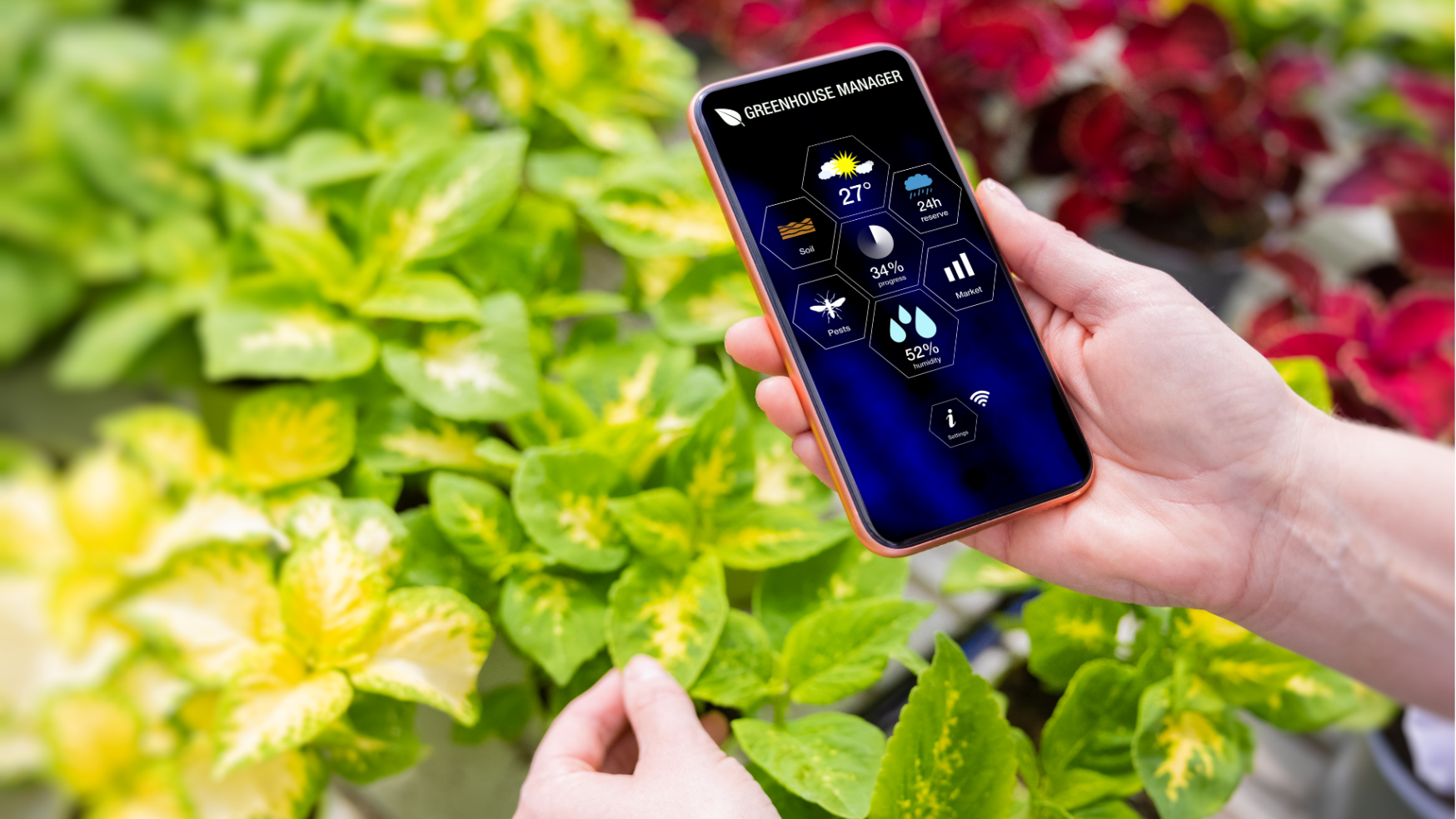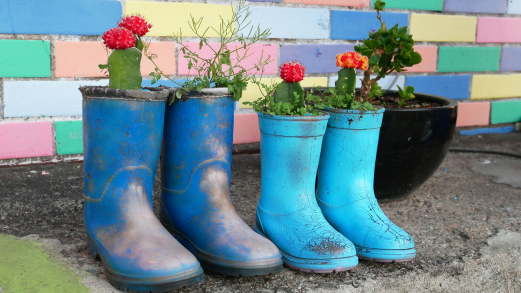
With only a few plant exceptions, Karen Sutherland’s small garden in Melbourne’s inner northern suburb of Pascoe Vale South, is a veritable food forest.
Walking through the front gate into a courtyard-sized front garden, visitors are immediately greeted with the first selection of an array of edible plants.

There is a stunning Rosemary cultivar ‘Blue Lagoon’, which, as its name suggests, produces bright blue flowers. Alpine strawberries sprawl in a planter box under a southern side window, and keeping them company are nasturtiums, and a Lemon Myrtle and Bay Tree in pots. There are violets (the flowers are used in herbal tea), a Carob, an Olive, giant artichokes, Chilean Guava and a Kaffir Lime, amongst many others.
There’s even an espaliered Feijoa that receives little or no additional water as it sits along the fence to one side of the driveway.
‘I really like the idea of colour-coordinating the front garden with the colours of the house,’ Karen says.
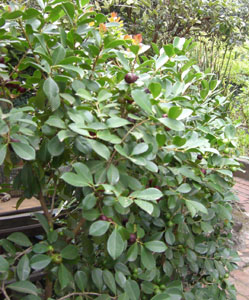
Riotous Back Garden
The back garden is another matter, where practicality reigns. It’s more riotous and eclectic in its planting. Space constraints are Karen’s major issues, as she struggles to include an ever-increasing number of plants.
Karen explains that the soil is very harsh. It’s heavy clay and it’s dry, like most of Melbourne these days. The conditions are made all the more challenging as Karen has a number of larger trees and is hoping to include more, albeit with a bit of culling over time.
Some of the newer plantings include a Banana, a Mango tree that is apparently suitable to grow in Melbourne, a Mulberry, and an Avocado.
‘The back corner of the garden is my tropical corner,’ she says with a laugh.
Just to the front of the tropical corner is a patch of raspberries protected from birds with wire, and just to the right is the prolific vegetable garden.
There is also an Almond, Nectarine, a large weeping apple ‘Wandin Pride’, and a Strawberry Guava hedge that hugs the outdoor entertaining area.

The Veggie Garden
The vegetable patch isn’t large at all, which is surprising when Karen explains just how much produce – and the variety – she harvests each season.
‘I actually get a lot of food from this garden,’ she says.
At the time of visiting it was the start of the winter season, so there were a number of new seedlings planted, and the tail end of the summer crop was looking a bit drab.
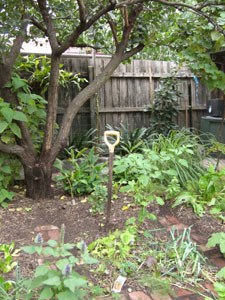
There are herbs such as parsley, sorrel, lemon grass, an old gnarled lemon verbena bush, and interesting vegetables such as perennial leeks, onions and capsicum, and the fruit Pepino (a subtropical fruit in the same genus as tomato and potato, Solanum muricatum) – Karen is pictured at top showing one of the fruits.
‘I am trying to introduce more perennial varieties,’ Karen says, ‘rather than annuals that I have to pull out at the end of each season.’
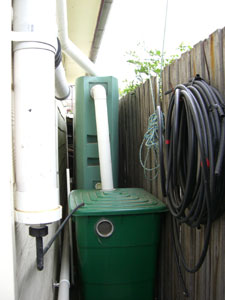
Watering
Being a produce garden, relying on drought tolerant plants is not always an option, so Karen has installed three 1200 litre water tanks. They are the Waterwall, an ideal solution for narrow places, such as down the side of the house, where one is installed, and down the side of a bungalow, where two more can be found.
One of the tanks is also set up to flush the toilet, as well as provide additional water for the garden.
Even the first flush of rain water is utilised. It is collected in a large wheelie bin for use on the garden. (The first flush of rainwater can be diverted to the stormwater with a suitable diverter, so that pollutants that might have accumulated on the roof, don’t end up in the tanks.)
Karen also utilises greywater for the trees and shrubs, although she thinks the weeping apple hasn’t been enjoying the greywater, as it is looking rather sad after the long summer.
‘Multi-grafting is my next challenge,’ says Karen, ‘I’m running out of space!’
See Karen’s website at www.edibleedendesign.com
Related Articles:
Citizen Science: A Pathway to Gardening Success and Biodiversity Conservation
In recent years, the realm of science has experienced a remarkable transformation, one that invites people from all walks of life to participate…
A Sustainable Gardener’s Guide to Thrifty Gardening
Creating an eco-friendly and cost-effective garden involves more than just nurturing plants; it's about adopting a sustainable approach that…

